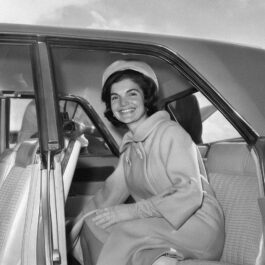As in many industries and forms of entertainment, cinema follows trends. In general, the most successful films are ones that speak to current issues, deal with popular themes or incorporate the latest technology to wow audiences. However, over the last few years, the mystery movie – particularly so-called ‘whodunit’ detective stories – have found an audience at the box office again. Join us as we look to solve our own mystery: how a genre rooted in the past has found its way back to the present.
From The Page To The Screen
Some of the best stories arise from conflict. So it is with the whodunit, which first arrived on the scene in the form of written stories between the First and Second World Wars, particularly in the 1930s when the genre was in its heyday and the phrase was coined by literary critic Donald Gordon. These tales usually featured recurring detective characters assigned the task of solving elaborate murder mysteries, often set in exotic locations with many intriguing suspects and clues. At a time when order and justice seemed to be in short supply in the real world, these stories provided a sense of both, as well as an escape.
Some might assume that Arthur Conan Doyle’s Sherlock Holmes novels were among the earliest novels of the genre, however purists would argue that his mysteries are not strictly whodunits, due to the unique ways that the author sets out the cases. Rather, other writers became celebrities within this space, including many female writers – a surprising number of them, in fact, given the gender inequality of the time. At the head of the pack was Agatha Christie, famous for her Hercule Poirot and Miss Marple stories. Christie was considered one of the four “queens of crime” alongside Dorothy L Sayers, Margery Allingham and Ngaio Marsh.
The popularity of the whodunit, and mystery novels in general, swelled around the same time that “talking pictures” were beginning to dominate the cinema. It makes sense, then, that many of these would prove successful on the big screen. Christie’s stories in particular have been very popular in a variety of media, with her short story “The Coming of Mr. Quin” adapted to film and released as The Passing of Mr. Quin in 1928.
In the following decades, long after many of these authors’ passing, whodunits would become some of the most celebrated stories in cinema. From Hollywood classics like Charade to ice-cold ‘90s cult hits like The Usual Suspects, the narrative DNA of these writers has lived on for generations.
Sherlock Fever
By the turn of the 21st century, however, things were looking quiet in the detective office. Movies in the 2000s were focused on different themes than mysteries, with epics like The Lord of the Rings and superhero films dominating the era. However, towards the end of the decade, the world’s best-known detective awoke new interest in the mystery genre. Guy Ritchie saw a new vision of Arthur Conan Doyle’s character in 2009’s Sherlock Holmes, starring Robert Downey Jr. Within four years, there were three well-known adaptations drawing in millions of viewers, with the movie and its sequel joined by a BBC adaptation starring Benedict Cumberbatch, as well as the American series Elementary.
In a broader sense, this is nothing new; Sherlock Holmes is cited as the most-adapted human literary character of all time. However, this boom in popularity proved that there was a keen interest in mystery movies, an interactive genre where audiences themselves can play detective alongside the lead character. Even if Sherlock stories are not whodunits in the strictest sense, they whetted the public appetite for stories in the same vein. Pretty soon, filmmakers looked to different detectives to see what other cases they might be able to crack…
The Whodunit Boom
In the 2010s, movies that kept the audience guessing were gathering momentum amid the more commonplace blockbusters. Movie adaptations of Stieg Larsson’s Millennium Trilogy, beginning with The Girl with the Dragon Tattoo, were a global success, and films such as Denis Villeneuve’s Prisoners and the phenomenon Gone Girl became talking points for movie fans. Some cinemas even let audience members cast “guilty” or “innocent” votes before going in to see the film.
With so much interest in stories that let viewers put the pieces together, several filmmakers drew on the classics to create films with large, star-studded ensemble casts in which everyone was a suspect. While it was set in rural America and was bloodier than its contemporaries, many argued that Quentin Tarantino showed hints of Agatha Christie in his 2015 film The Hateful Eight. Others were more overt in their inspiration. Oscar-winning director Kenneth Branagh adapted directly from perhaps the best-known mystery novel ever, Murder on the Orient Express, casting himself as the great literary detective Hercule Poirot and actors such as Johnny Depp, Judi Dench and Michelle Pfeiffer as his suspects. Despite the book having been adapted numerous times in the past, the fresh perspective became irresistible for moviegoers, who came in their droves and prompted two sequels: 2022’s Death on the Nile with Gal Gadot, and A Haunting in Venice the following year, which co-starred Tina Fey and Michelle Yeoh.
Rian Johnson, director of Star Wars: The Last Jedi and sci-fi film Looper, drew on the whodunit mysteries of the past for Knives Out, a global smash which saw Daniel Craig swap the suave 007 tuxedo for the natty suits of Southern gentleman Benoit Blanc. An outrageously fun comedy, a number of stars got on board to make the guessing game that much more befuddling. Many more would do the same for the sequel, 2022’s Glass Onion, which saw Craig act opposite the likes of Edward Norton, Kate Hudson, Janelle Monae and Dave Bautista. Unlike the old-school glamour of the Christie adaptations, Johnson’s stories have a heavy dose of modern satire, taking a comedic look at politics, social media and the tech industry.
Agatha Christie herself was celebrated in one recent whodunit, See How They Run, which imagines a murder taking place at the 100th performance of her play The Mousetrap. It was a popular hit, with fictional versions of many beloved writers and actors celebrating the roots of the genre. Elsewhere, Millie Bobby Brown continued the Arthur Conan Doyle tradition in the Enola Holmes movies, Liam Neeson brought back celebrated American detective Phillip Marlowe, and Adam Sandler teamed up with Jennifer Aniston to poke fun at the genre in comedy Murder Mystery and its sequel.
Defying Expectations
Such success has left those in the know scratching their heads, wondering why stories that mostly have their feet in the past have become so popular with today’s highly connected generations. The answer, at least to those who make these movies, is the timelessness of the storytelling. Themes of life, death, betrayal and justice never go out of style, and larger-than-life characters will always be around to save the day.
“The thing that’s specific to whodunits,” Rian Johnson told The Atlantic, “is that there’s no moral ambiguity. Everything is set right by the detective at the end of it and put in its proper place. The morality comes from Poirot having sadness that this kind of thing could happen in the world, and that he can’t stop it.” The detective’s virtue, however, is also the story’s saving grace. “My essential pleasure with the genre,” he continues, “[is that] you rarely end a whodunit in a very dark way.”
Poirot himself, Kenneth Branagh, also appreciates the generational reach of these mysteries: “All of this [success] was testament to Agatha Christie,” he told The Hollywood Reporter, “to the dynamics and skill of those ensembles, and the audience’s interest in going on these precarious murder vacations, in the hands of a much-loved character.”
Future Cases
The popularity of such films has surpassed expectations, and the genre shows no sign of stopping. The success of A Haunting in Venice has led many to believe a detective cinematic universe could be on the cards, with Agatha Christie’s Miss Marple being a possible candidate to share the screen with Branagh’s Poirot, as well as a number of other characters from her stories. Johnson is also working on a third Knives Out film, with Craig admitting he enjoys playing the character of Benoit Blanc so much that he would be happy to continue in the role for years to come. Elsewhere, a number of famous names come together for the forthcoming Taylor Hackford-directed mystery Sniff, set in a retirement community and starring Morgan Freeman alongside Helen Mirren and Danny DeVito. Coming full circle, Robert Downey Jr is in pre-production for a third Sherlock Holmes film, coming over a decade since his last case.
Just as the novels of the 1930s helped contemporary readers make sense of an uncertain time, movie mysteries are a light and fun escape from everyday life, where the villain is always brought to justice and everything is tied up neatly in under two hours. If anything, regardless of the era, the themes of these stories become more important as time goes on.














Sorry, the comment form is closed at this time.